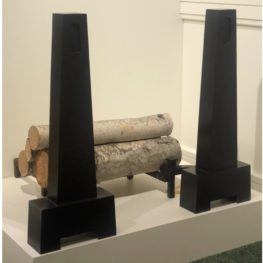George Washington Maher
1864-1926
One of the leading practitioners of the Prairie School style of architecture, George W. Maher began his career as an apprentice in the firms of Louis Sullivan and J.L. Silsbee, where he worked alongside other budding talents like Frank Lloyd Wright and George Grant Elmslie. From Sullivan, Maher absorbed a penchant for basing his architectural ornamentation on nature and structural form, while shying away from historical styles. Silsbee instilled in the young architect a thorough knowledge of Shingle Style architecture, an aesthetic that was characterized by wide porches, shingled surfaces and asymmetrical forms. After establishing his own practice in 1888, Maher continued to work in the Shingle Style, designing buildings with strong horizontal lines and short, massive vertical supports. Around 1905, this heavy monumentality lightened, giving way to the architect’s mature Prairie School aesthetic. Maher’s motif-rhythm theory, first conceived in 1897, was his most original contribution to the Prairie School. Inspired by German and Austrian architects, in particular Josef Hoffmann and the Viennese Secessionists, his idea was to create a cohesive living space through the exclusive use of a single theme. In order to unify the exterior structure and the interior decorative elements, Maher repeated modifications of the chosen motif in lighting fixtures, furniture, and woodwork, as well as elaborate pieces of art glass. Fully aware of the potential to overly saturate a space with a single pattern, the architect was careful to synthesize a simplified yet harmonious interior that not only conveyed a strong personal impression of himself but also of his client.

